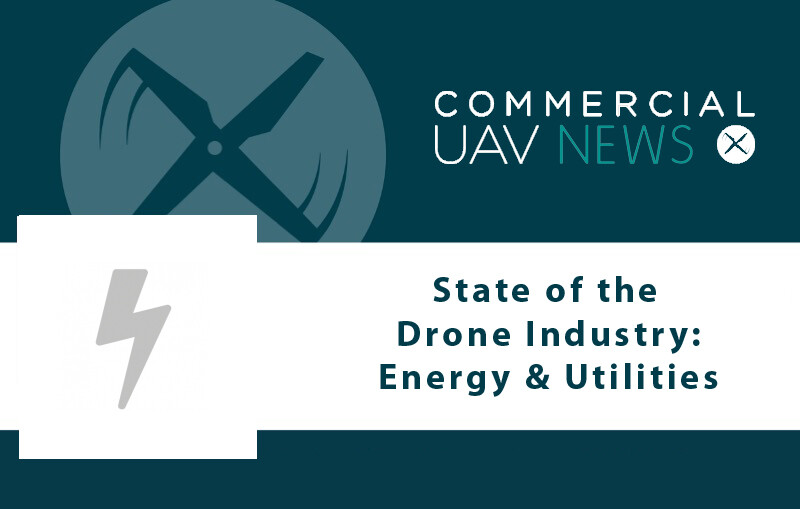“UAS can enhance operations across the energy industry by providing a cost-efficient, effective, and safe method for maintaining and ensuring the reliability and security of critical assets, and energy companies are starting to realize the capabilities of UAS and the opportunities that it can offer their organizations,” Christian Albertson, a Senior Research Analyst at Guidehouse Insights, told Commercial UAV News. “But there is still work to be done in order to fully embrace drones within the energy industry.”
Chris Fleming, Chief Executive Officer at the drone survey and inspection firm Cyberhawk, agreed that the energy industry has largely embraced drones, but that full adoption has not yet occurred.
“There are some use cases where drones aren’t as effective or as efficient,” he stated. “For example, when we do utility tower inspections, it's still cheaper and faster to do a fly-by of a line with a helicopter, so companies will still do it even though you can’t get the same high-quality imagery that you can from a drone.”
For industry experts like Albertson and Fleming, the potential of drones is enormous for energy and utility firms, but, as with any decision regarding the adoption of technology, companies must weigh the comparative value of their options.
“People get excited about the technology as it’s relatively cheap,” Fleming said. “But within companies there naturally competition between competing technologies in terms of what’s the most valuable.”
Determining what’s the most valuable is a complex process. According to Albertson, there are two models for adopting, deploying, and scaling UAS technologies within the energy industry.
“These purchasing models use either CAPEX or OPEX. CAPEX refers to companies building their own UAS programs by purchasing hardware and software and integrating the technology into their own processes,” he explained. “The OPEX model is commonly referred to as ‘unmanned aerial systems as a service’ (UaaS) and requires less upfront investment from the energy company.”
UaaS providers, Albertson said, offer hardware, software, and training solutions for guided use by an organization. In this model, the UaaS company is hired to perform a task using the UAV for data collection, provide the raw data, and, in most cases, perform analysis on the data.
Traditionally, Albertson reported, “UAS work in the energy industry was performed by UaaS providers with few energy companies, except for a few early adopters, building their own UAS programs internally using the CAPEX model. However, in the last 3-4 years, there has been a shift and energy companies are beginning to build their own UAS capabilities while the UaaS market consolidates leaving a few key market players.”
This shift, he believes, is “indicative of the industry embracing the technology and will only continue as companies realize the benefits associated with integrating the technology into their existing solutions.”
Fleming also reported that many energy companies have moved from outsourcing drone operations to taking the work “in-house.” However, he foresees some companies moving back to an outsourcing model.
“At some point, somebody’s going to say ‘Why are our people flying these drones? We don’t do our own scaffolding. We don't do our own tank cleaning. We should focus on what we do best and outsource our drone operations to people who are professionals,” he stated.
Whether energy and utilities firms move toward in-house drone programs, hiring outside firms, or a hybrid remains to be seen. What also remains to be seen is how the regulatory environment will impact drone operations in these sectors.
“One regulation that is seen as a limitation to realizing the full potential of UAVs is the current standard for operating beyond visual line of sight (BVLOS),” said Albertson. “Current regulations in the US and other parts of the world dictate that UAS operators must maintain constant visualization of the aircraft they are piloting, but when inspecting hundreds of miles of transmission line or pipeline, maintaining visual line of sight can become burdensome and complex, especially in areas with difficult terrain.”
Based on his experience at Cyberhawk, which performs aerial inspections for oil, gas, petrochemical, and utility companies, Fleming understands the challenges posed by current BVLOS rules. “When we inspect refineries, oil and gas platforms, wind farms, or transmission lines in the middle of nowhere or tankers at sea, there are few if any people around, so there isn’t much risk,” he explained. “But we are still bound by the laws of keeping things within line of sight.”
Fleming stated that BVLOS regulations must change “for us to fully recognize the value that this technology creates.”
Albertson believes that regulatory changes will come, and that progress is already being made. “Incremental repeal or rollbacks of current regulations are anticipated within the next five years,” he said, “and in certain instances, waivers have already been approved for BVLOS flying.”
For Fleming, technological advances will drive UAV adoption in the energy sector and create greater value, even if regulations are slow to change.
“Object avoidance technology will give us the ability to fly closer to assets, and we’ll be able to get the type of data we need,” he stated. “Also, as the cost of data capture decreases, you won't need as many people involved, so asset owners will actually want to do more frequent inspections. That will give them better historical information of their assets, and thus save them money in the long term.”















Comments